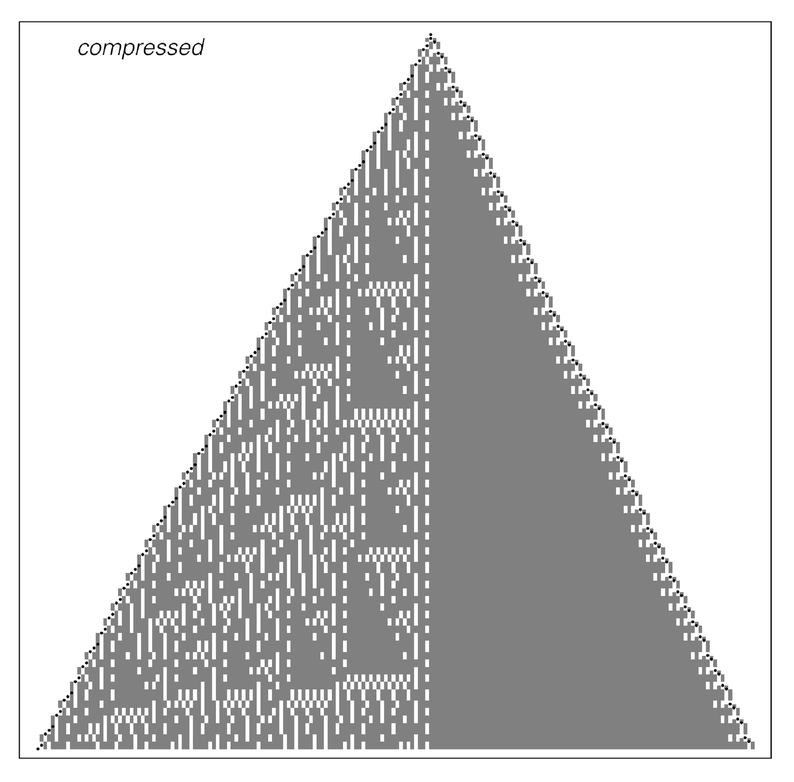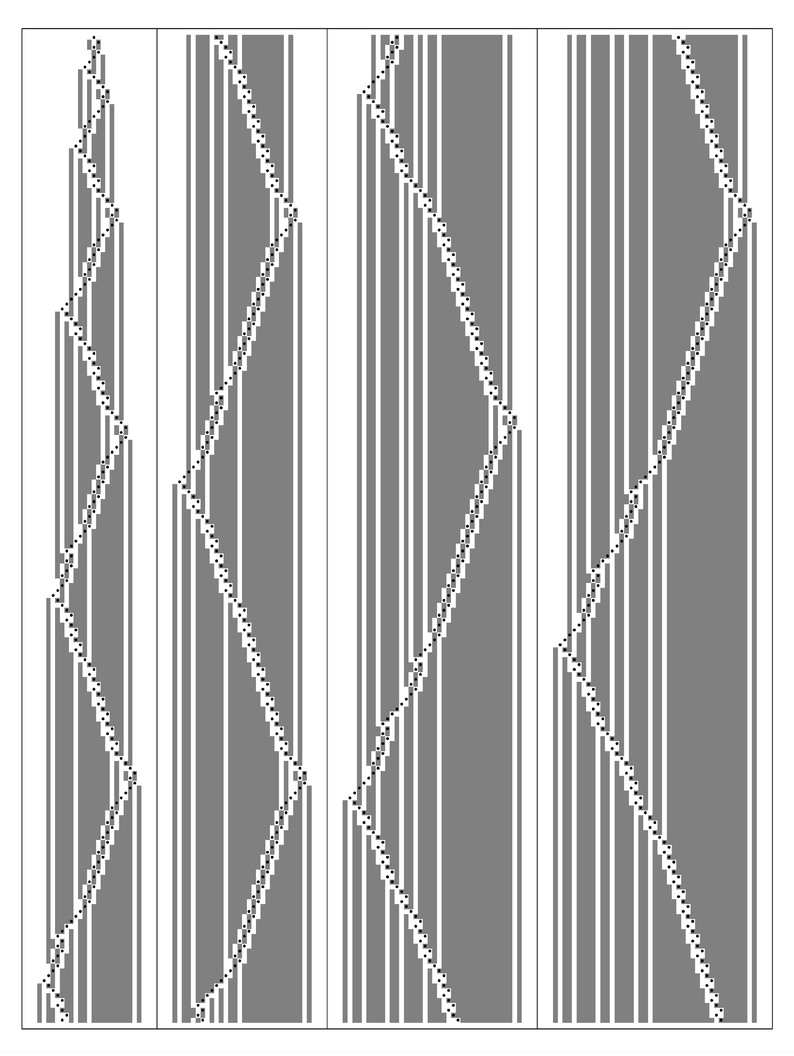The overall pattern is nevertheless still very regular. But after searching through perhaps 50,000 rules, one finally comes across a rule of the kind shown below—in which the compressed pattern exhibits very much the same kind of apparent randomness that we saw in cellular automata like rule 30.
But even though the final pattern left behind by the active cell in the picture below seems in many respects random, the motion of the active cell itself is still quite regular. So are there mobile automata in which the motion of the active cell is also seemingly random? At first, I believed that there might not be. But after searching through a few million rules, I finally found the example shown on the facing page.
  |  |
A mobile automaton that yields a pattern with seemingly random features. The motion of the active cell is still quite regular, as the picture on the right shows. But when viewed in compressed form, as on the left, the overall pattern of colors seems in many respects random. Each column on the right shows 200 steps of evolution; the compressed form on the left corresponds to 50,000 steps.